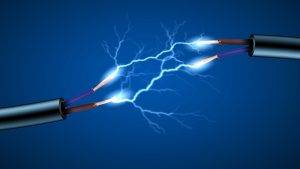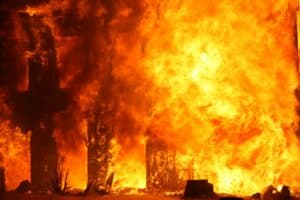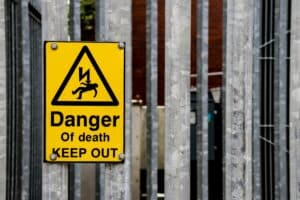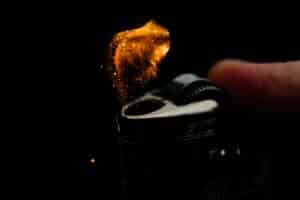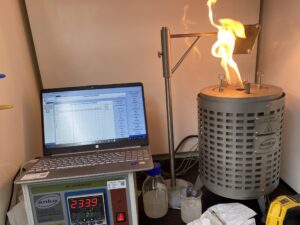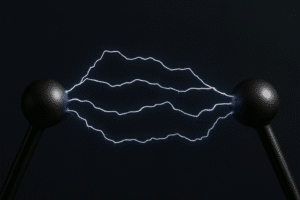We also offer
What Is an Ignition Sources Assessment?
Ignition Sources Assessment is a critical component of process safety. It involves identifying and controlling potential ignition hazards that could cause fires, explosions, or other incidents—especially in facilities handling flammable gases, vapors, or dust. This assessment evaluates all aspects of your operation, from electrical systems and hot surfaces to static electricity and chemical reactivity.
Our comprehensive process helps safeguard your people, assets, and environment while ensuring compliance with OSHA, NFPA, API, IEC, and other regulatory standards.

Ignition Sources
Why Perform an Ignition Sources Assessment?
Conducting an Ignition Sources Assessment is essential in any industrial setting where combustible materials are present. It allows you to:
-
Identify potential ignition sources, including open flames, electrical sparks, hot surfaces, and static discharge.
-
Prevent fires and explosions by implementing targeted control measures.
-
Comply with industry regulations and standards such as NFPA 70, NFPA 499, IECEx, and OSHA PSM.
-
Protect personnel and facilities from catastrophic losses.
Our Approach to Ignition Sources Assessment
1. Comprehensive Risk Evaluation
We assess all ignition sources across your operation, from raw material handling to storage and transport. Our team uses thorough hazard identification, risk assessments, and safety audits to pinpoint potential ignition risks.
2. Advanced Technology and Tools
We use modeling software and scenario simulations to evaluate ignition risk severity. This ensures data-driven decisions for effective mitigation planning.
3. Tailored Solutions for Every Facility
No two facilities are the same. We provide customized recommendations based on your equipment, processes, and safety priorities.
4. Compliance-Driven Assessments
We align our assessments with current standards and ensure full regulatory compliance—OSHA, NFPA, API, IEC, and more—helping you meet both legal and operational expectations.
5. Ongoing Support and Training
Our process doesn’t stop after the assessment. We provide training and improvement recommendations to keep your personnel informed and your facility safe.
Why Choose Prime Process Safety Center
-
15+ years of experience in process hazard analysis and ignition risk assessment
-
Skilled experts familiar with global safety standards and best practices
-
Proven track record of reducing ignition incidents across chemical, pharma, and manufacturing industries
-
Commitment to customized service and long-term safety culture improvement
FAQ
1. What is an ignition source assessment?
An ignition source assessment is a systematic evaluation of potential sources of ignition, such as electrical equipment, open flames, sparks, static electricity, or hot surfaces, in an industrial setting.
2. Why is an ignition source assessment important?
An ignition source assessment is crucial because it helps identify and mitigate potential sources of ignition that could lead to fires, explosions, or other hazardous incidents.
3. How is an ignition source assessment conducted?
An ignition source assessment is conducted by analyzing the industrial process, equipment, and operations to identify potential ignition sources and evaluate their likelihood of causing an incident. It involves a comprehensive inspection, documentation review, and observation of work practices and equipment installations.
4. Who should perform an ignition source assessment?
An ignition source assessment should ideally be conducted by professionals with expertise in process safety, such as process engineers, safety consultants, or inspectorates familiar with industrial operations and hazards.
5. How often should an ignition source assessment be conducted?
The frequency of ignition source assessments may vary depending on factors such as the nature of operations, changes in equipment or processes, previous incident history, and regulatory requirements. It is typically recommended to conduct assessments periodically, considering these factors.
6. What can be done to eliminate or control ignition sources?
Once ignition sources are identified, appropriate control measures can be implemented. These may include using explosion-proof electrical equipment or enclosures, implementing hot work permits, grounding equipment, controlling and neutralizing static electricity, and implementing good housekeeping practices.
7. What are some common ignition sources identified in industrial settings?
Common ignition sources may include electrical equipment, such as motors and switches, open flames from processes like welding or cutting, sparks resulting from friction or impact, static electricity from material handling, or hot surfaces from equipment or piping. EN 1127 lists at least 13 types of ignition sources that should be scrutinized in the operations.
8. How do ignition sources assessments contribute to regulatory compliance?
Conducting ignition sources assessments helps industries comply with safety regulations and standards set by regulatory bodies by ensuring compliance with codes and regulations related to hazardous locations, electrical installations, fire protection, and process safety.
9. Can an ignition source assessment prevent all incidents?
While an ignition source assessment significantly reduces the risk of incidents caused by ignition sources, it might not prevent all incidents. Therefore, other safety measures, such as process controls, emergency planning, and personnel training, should also be implemented to create a comprehensive safety program.
10. How can the findings of an ignition source assessment be utilized?
The findings of an ignition source assessment can be used to develop and implement safety procedures, control measures, facility modifications, and personnel training programs, with the ultimate goal of preventing and minimizing the risk of ignition-related incidents in industrial settings.





